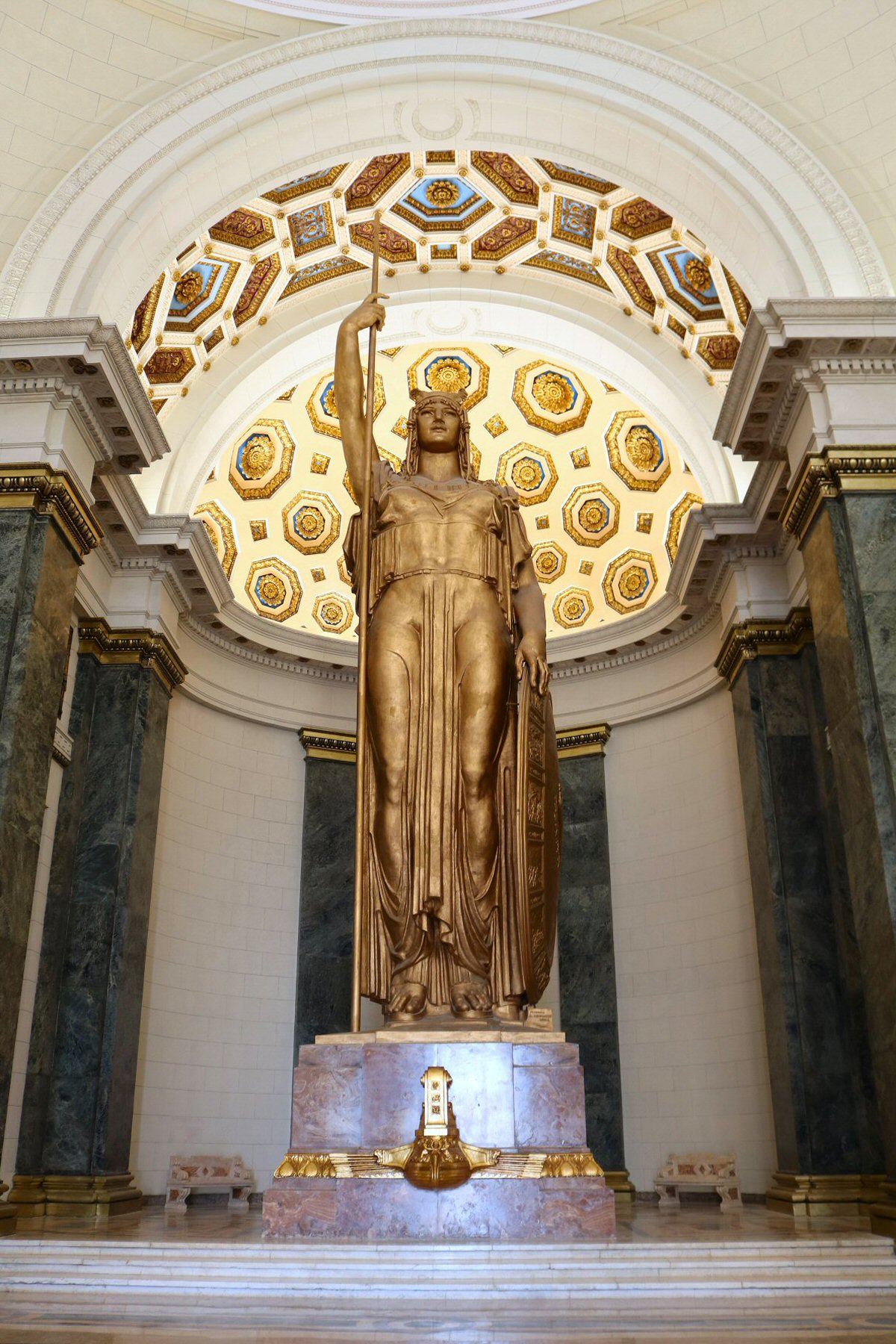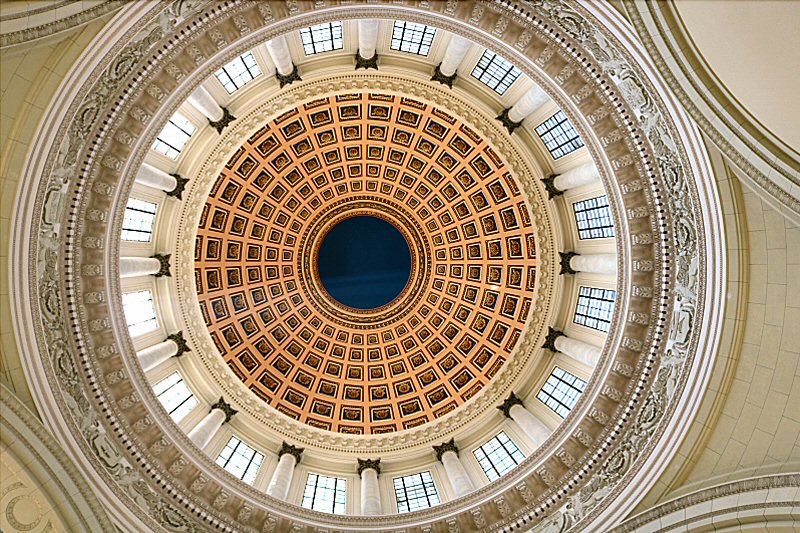
Entering the main hall through three
large bronze doors in the central portico, you will reach
first the area under the dome. The walls around are
decorated with sculpted bronze panels depicting Greek
classical scenes and key episodes of Cuban history.
The dome stands on 16 white marble
columns. The coat of arms of six Cuban provinces that were
present at the time when the building was constructed, can
be seen at the base of the cupola. 192 framed metopes are
adorning the inside of the cupola. Directly under the
central spire of the dome you will see the replica of the
25-carat (5 g) diamond embedded on the floor. It is in the
center of an octagonal star figure, made with marbles of
different shades. It owes its bright appearance to the light
source, illuminating it from below.
The original of this big diamond
belonged to the last Russian Tsar Nicholas II. It was
brought to Cuba by a Turkish merchant who sold it to the
Cuban authorities that want to exhibit it in the new Palace
of Congresses. At that time its estimated value was about
60.000 $. In 1946 the original diamond disappeared from its
glass enclosure on the floor, where it had stayed since 20
years. The diamond was guarded closely, but the false news
circulated by the authorities, was more efficient to avoid
it from being stolen: it was believed that any attempt to
remove the diamond, would lead to release deadly gases that
would kill the thief. The President of the Senate offered a
reward of 3.000 $ to anybody that would be successful in the
return of the jewel. After 69 days the diamond returned
mysteriously to the President Ramón Grau San Martín, leaving
many question marks behind. The precious stone is currently
in the National Bank of Cuba and will return to its place,
when the repairs will be completely finished. The embedded
stone marks symbolically the zero kilometer (the starting
point) of the national road network of Cuba. The distance by
road between Havana and any other part of the island is
calculated from this point. The same feature is present in
the US Capital where the Crypt constitutes the zero
kilometer.

It is the third tallest indoor
statue on the world, surpassed only by the Buddha statue in
Nara, Japan, and by the statue of Abraham Lincoln, erected
in his honor in the mausoleum in Washington DC. On the other
hand, the Statue of the Republic was the second highest
indoor statue at the time, with only the Buddha statue being
taller. Zanelli inspired the statue from Athena, the Greek
Goddess of wisdom, handicraft and warfare. It represents a
figure of a standing young, gallant woman. She is dressed in
a tunic. She wears a Phrygian cap-like helmet and holds a
spear at her right hand and a shield at her left hand that
rests on the ground. Two Creole Cuban women served to
Zanelli as model: Lily Válty for the body of the statue, and
Elena de Cárdenas y Echarte, for the face of the statue.
In front of the statue, adjacent to
marble plinth, a trireme boat with the oars reclining, can
be seen. On its keel three zodiac signs are engraved:
Scorpio, Capricorn and Gemini. There are also two
figures more on the boat that belong to a man and a woman,
half human and half fish. The context of this statue of the
trireme boat is still unknown.
Zanelli titled his work The
Republican Virtue, but in Cuba it is known as La Estatua de
la Republica (Statue of the Republic).
In 1983 the statue inclined to one
side due to a mechanical failure, but it was repaired
successfully.

